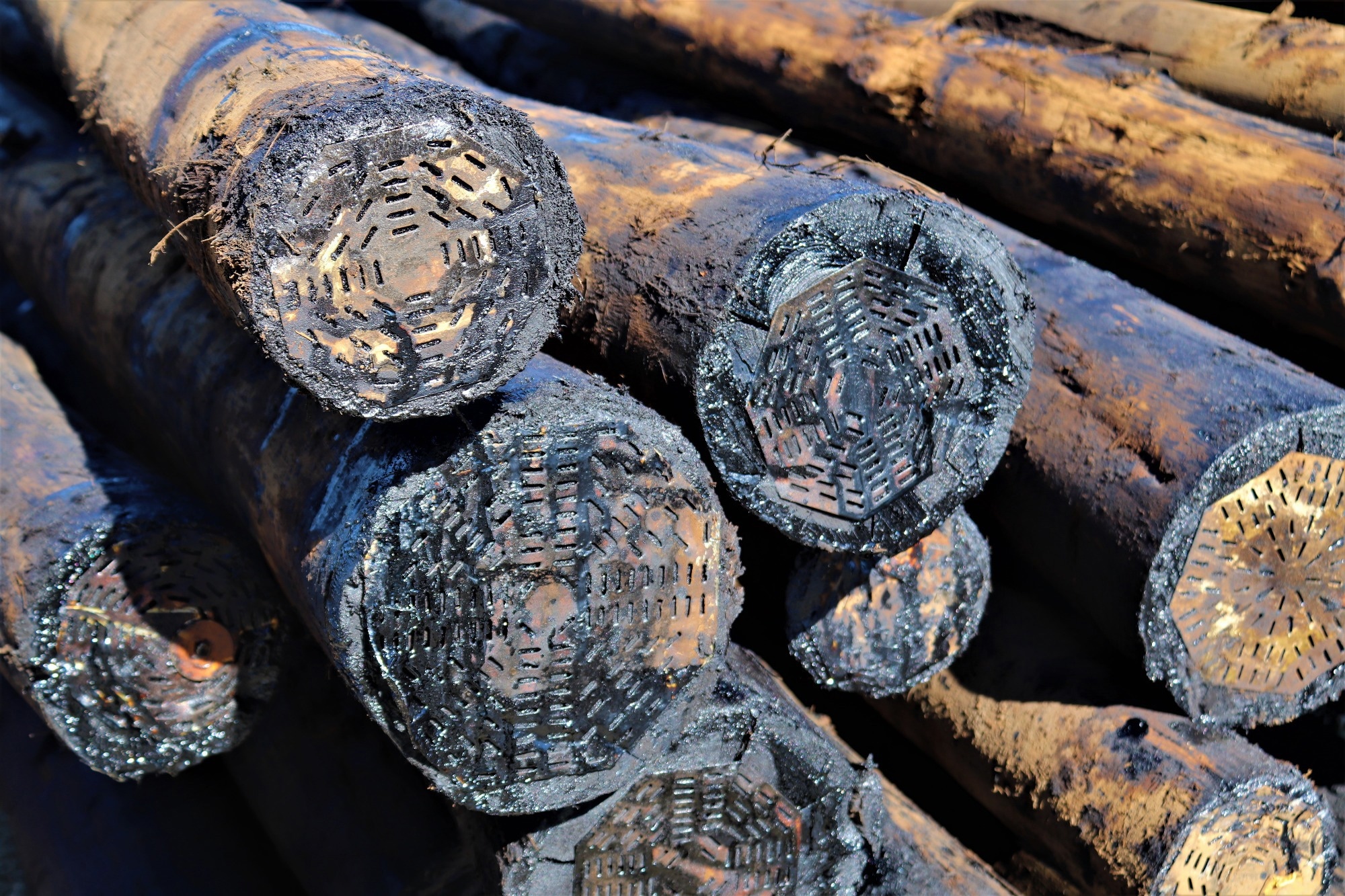Creosote is a highly effective wood treatment product that has been used for hundreds of years. However, negative effects on the environment and human health have led to its limited use over the past few decades. This year sees the latest legislation on creosote usage – it will be illegal to sell creosote-treated fencing products for agricultural or equine use.

Image Credit: shutterstock.com/speedshutter Photography
Creosote, derived from wood or coal tar, serves as an exceptional timber preservative. It safeguards against fungi and pests, substantially extending the lifespan of wooden items for many years. Due to this, it has enjoyed extensive application for items like utility poles, fence panels, railway sleepers, and various other outdoor timber uses.
Creosote, however, contains bi- and poly-aromatic hydrocarbons, including compounds like benzo(a)pyrene, which has been categorized as a group 1 carcinogen. Moreover, creosote is classified as extremely toxic and leads to soil and water contamination, which is subsequently ingested or absorbed by wildlife and plants.
The 2023 Creosote Ban
Regulations have curtailed creosote use since the early 2000s. For instance, the European Union (EU) prohibited consumer utilization of creosote to treat domestic wood, such as fence panels, in 2003. In 2013, additional controls were introduced, necessitating specific authorization for creosote sales in the EU market.
As of April 30, 2023, the prohibition on selling creosote-treated items intended for agricultural or equine purposes was enforced. Additionally, February 28, 2023, marked the absolute deadline for individuals and businesses involved in wood treatment for agricultural or equine applications.
The sole sanctioned applications for creosote-treated wood now encompass railway sleepers and utility poles.
Alternatives to Creosote?
Due to creosote's harmful nature, legislative actions have generally coincided with the availability of viable substitutes, hence the exemption of utility poles and railway sleepers from the ban.
Foreseeing an eventual comprehensive ban, manufacturers of wood treatment products have been researching alternatives for years, resulting in numerous such alternatives being accessible.
Alternative methods of wood preservation have been extensively examined, including heat- and pressure-treatment to fundamentally alter wood properties. Other preservation techniques encompass the application of a physical barrier to the wood.
For the preservation of fence panels and posts exposed to various pests, fungi, and harsh environmental conditions, a liquid preservative, functioning in a manner akin to creosote, remains the preferred solution.
For example, hot oil-based copper treatments have demonstrated high effectiveness against fungi and insects, obtaining authorization for use across a range of industrial applications. These products readily permeate wood and exhibit strong, water-repellent qualities.
Where Does Analysis Come in?
Analysis plays a vital role in various stages of the wood treatment lifecycle. These include:
- Determining the correct chemical composition of wood-treatment chemicals during manufacturing and before application
- Ensuring that treated wood attains sufficient surface coverage and penetration of the preservative product
- Identifying the presence and type of wood treatment applied to end-of-life timber products, enabling adherence to local legislative guidelines
These analyses demand a comprehensive breakdown of the chemical composition of both liquids and solids, and XRF (X-R fluorescence) technology represents the ideal method for providing reliable and accurate results.
XRF Analysis for Wood Treatment Applications
XRF analysis proves to be a reliable and effective method for verifying the composition of wood treatment products and treated timber, whether for quality control or legislative purposes. XRF offers numerous advantages over alternative analysis techniques because:
- It is a non-destructive technique suitable for pre-shipping analysis without detrimental effects
- It can analyze solids, liquids, powders, and pastes
- Minimal or no sample preparation is necessary, and it does not make use of hazardous chemicals
- Testing is rapid, with easily interpretable results presented in seconds
- When the equipment is properly maintained and calibrated, long-term accuracy and precision are guaranteed
XRF equipment can be rented, an analyzer can be purchased, or the services of a third-party testing house specializing in XRF analysis can be utilized.
For small sample sizes, a benchtop analyzer is perfect, and many are capable of analyzing several samples at once, automating the analysis process. This setup is well-suited for manufacturing scenarios where a substantial volume of wood-treatment liquid requires quality control.
In cases where large structures need inspection or end-of-life timber products must be analyzed, a portable, handheld XRF analyzer is the ideal tool. Many of these devices offer accuracy comparable to benchtop models and enable swift testing and sorting of wood that must be disposed of correctly.

This information has been sourced, reviewed and adapted from materials provided by Hitachi High-Tech Analytical Science.
For more information on this source, please visit Hitachi High-Tech Analytical Science.